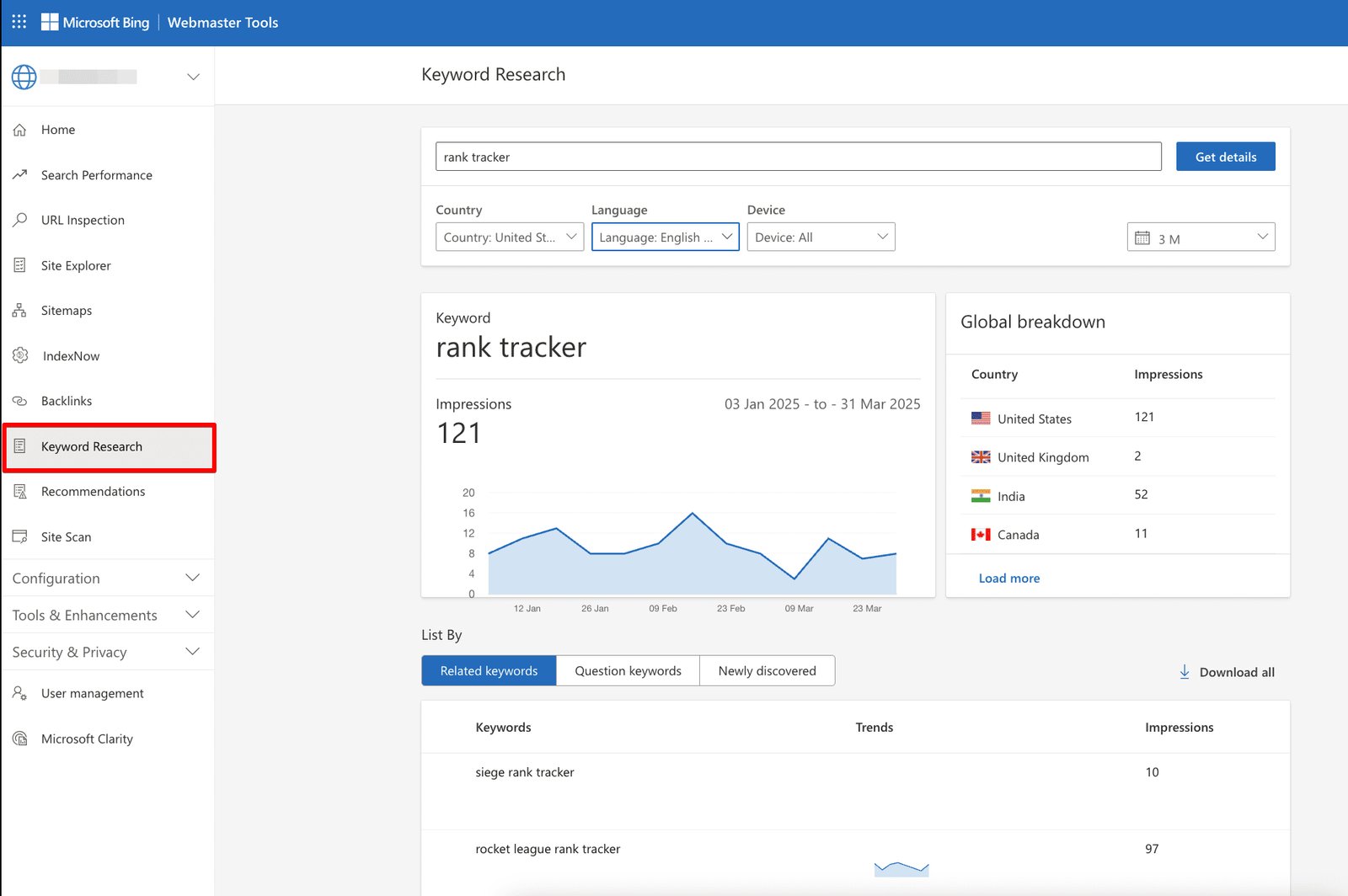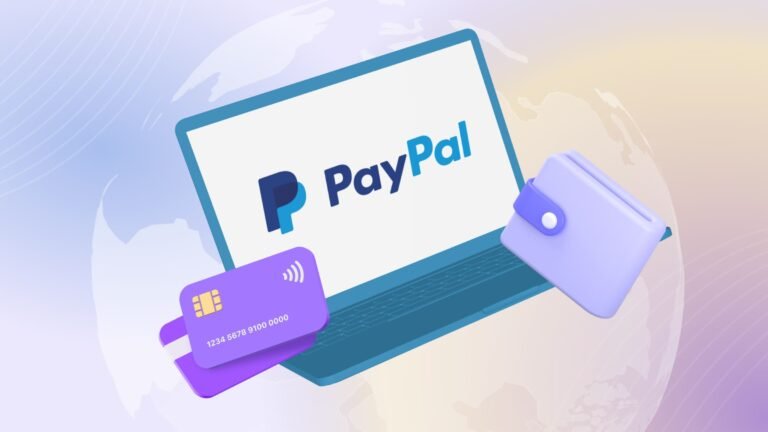23 tips on how to turn Bing search into an ally to your web content
In today’s digital age, having a website that ranks well on search engines is crucial for driving traffic and engaging your audience.
For those of us passionate about culture, style, and digital life tutorials, ensuring our content is discoverable is a top priority.
Bing, one of the leading search engines, provides a robust set of Webmaster Guidelines to help site owners optimize their websites for better indexing and ranking. By adhering to these guidelines, you can enhance your site’s visibility, avoid penalties, and create a seamless experience for your readers.
In this in-depth blog post, we’ll explore practical tips and strategies from the Bing Webmaster Guidelines, tailored for bloggers in the culture, style, and digital lifestyle niche. Find your tips for better search results in Bing…
Why Bing search matters
The Bing Webmaster Guidelines are designed to help website owners understand how Bing discovers, indexes, and ranks web pages. Following these recommendations ensures your site is properly crawled and indexed, increasing its chances of appearing in relevant search results.
For a blog focused on culture, style, or digital tutorials, this means your carefully crafted posts on travel tips, fashion trends, or tech how-tos will reach the right audience. However, failing to comply with these guidelines—especially by engaging in abusive practices—can result in penalties, such as ranking demotions or even delisting from Bing’s index.
Let’s dive into the actionable steps you can take to optimize your website, based on the Bing Webmaster Guidelines, to boost your blog’s performance and create a better experience for your readers.
How to help Bing index your blog or website
1. Create and Maintain a Sitemap
A sitemap is your website’s roadmap, guiding Bing’s crawler (Bingbot) to all your important pages. For a blog, this ensures that your latest posts on minimalist fashion, cultural travel guides, or digital productivity hacks are discovered quickly.
- Use an XML sitemap: XML is the preferred format, though Bing also supports RSS, mRSS, Atom 1.0, or plain text files. List only canonical URLs (the primary version of a page) to avoid confusion.
- Keep it updated: Update your sitemap daily, removing outdated URLs or dead links. For example, if you delete a post about a discontinued app, remove its URL immediately.
- Include metadata: Use the <lastmod> tag to indicate when a page was last updated, helping Bing prioritize fresh content.
- Submit your sitemap: Upload it via Bing Webmaster Tools or add a line to your robots.txt file, like: Sitemap: https://yourblog.com/sitemap.xml.
- Manage large sites: If your blog has over 50,000 URLs or exceeds 50 MB, split your sitemap into smaller files and use a sitemap index file to organize them.
A well-maintained sitemap ensures Bing discovers every post, from your guide to sustainable fashion to your tutorial on mastering photo editing apps.
2. Submit URLs Directly for Instant Indexing
When you publish a new post—say, a tutorial on creating Instagram Reels or a review of a cultural festival—use Bing’s tools to ensure it’s indexed immediately.
- Leverage the URL Submission API: Integrate Bing’s Content Submission API to notify Bing of new or updated content in real time.
- Use Bing Webmaster Tools: Manually submit URLs for indexing if the API isn’t an option. This is ideal for smaller blogs or one-off updates.
This approach ensures your time-sensitive content, like a post about a trending fashion event, appears in search results quickly.
See also…
3. Optimize Your Links
Links are a key signal of your site’s authority and relevance. For a culture and style blog, organic links from other reputable sites (e.g., a travel magazine linking to your city guide) can boost your credibility.
- Create high-quality content: Write unique, engaging posts—such as a deep dive into the history of streetwear or a step-by-step guide to digital nomadism—to naturally attract links.
- Use crawlable links: Ensure links use <a> tags with an href attribute and include descriptive text or alt attributes for images. For example, link to your post on “Top 10 Cultural Festivals” with text like “must-visit global festivals.”
- Limit links per page: Keep links to a reasonable number (under a few thousand) to avoid overwhelming Bingbot.
- Mark paid links: Use rel=”nofollow”, rel=”sponsored”, or rel=”ugc” for advertisements or sponsored posts to prevent them from influencing rankings.
Avoid manipulative tactics like buying links or joining link farms, as these can lead to penalties.
4. Control Page Count and Avoid Duplicates
A lean, organized website is easier for Bing to crawl. For your blog, this means ensuring each post has a unique purpose and URL.
- Use canonical tags: If you have similar posts (e.g., “Summer Fashion Tips” and “Summer Style Guide”), use <rel=”canonical”> to specify the primary version.
- Configure URL parameters: Prevent duplicate URLs (e.g., yourblog.com/post?sort=asc vs. yourblog.com/post) by setting parameters in Bing Webmaster Tools.
- Unify mobile and desktop URLs: Use responsive design to serve the same URL to all devices, simplifying indexing.
This keeps your blog focused and ensures Bing prioritizes your best content.
5. Implement Proper Redirects
When reorganizing your blog (e.g., moving a post from /old-url to /new-url), use redirects to maintain user experience and SEO value.
- Permanent redirects (301): Use for long-term changes, like restructuring your blog’s categories. Maintain for at least three months.
- Temporary redirects (302): Use for short-term changes, like a one-day site maintenance.
- Avoid misusing canonical tags: Don’t use rel=”canonical” as a substitute for proper redirects when content moves permanently.
6. Facilitate Crawling
Help Bingbot crawl your site efficiently to ensure all your content is indexed.
- Use Bing Webmaster Tools: Adjust crawl frequency and depth to suit your blog’s size and update schedule.
- Optimize JavaScript: Minimize HTTP requests for JavaScript-heavy pages. For large blogs, use Dynamic Rendering to serve pre-rendered content to Bingbot.
- Allow CSS and JavaScript crawling: Ensure robots.txt permits access to these files for proper rendering.
See this…
7. Remove Obsolete Content
When retiring old posts (e.g., an outdated tutorial on a deprecated app), remove them cleanly.
- Return a 404 status: Use HTTP 404 (“Not Found”) for permanently removed pages.
- Use removal tools: Submit removal requests via Bing Webmaster Tools for faster deindexing. Renew requests every 90 days if needed.
8. Configure robots.txt
The robots.txt file directs Bingbot on what to crawl or skip.
- Place in the root directory: Ensure it’s at yourblog.com/robots.txt.
- Block low-value pages: Prevent crawling of login pages, search results, or admin areas.
- Use noindex for precision: Instead of blocking pages with Disallow, use <meta name=”robots” content=”noindex”> to prevent indexing without affecting crawling.
- Review regularly: Check for errors using Bing Webmaster Tools to avoid blocking important content.
9. Save Resources
Optimize your site’s performance to improve crawling efficiency and user experience.
- Enable HTTP compression: Reduce bandwidth usage for faster page loads.
- Use Conditional Get: Minimize server load by caching resources.

How to help Bing understand your content
10. Craft High-Quality, User-Focused Content
Your blog thrives on rich, original content that resonates with your audience. Whether you’re writing about cultural traditions, style tips, or digital tools, prioritize value.
- Research keywords: Identify what your audience searches for, like “sustainable fashion brands” or “digital nomad essentials,” and tailor your content accordingly.
- Be comprehensive: Provide in-depth guides that fully address reader needs. For example, a post on “How to Style Boho Outfits” should cover trends, tips, and product recommendations.
- Avoid thin content: Don’t publish posts dominated by ads or affiliate links without substantial value, as these may not rank well or could be deindexed.
11. Optimize Images and Videos
Visuals are central to culture and style blogs, so make them search-friendly.
- Use original media: Include unique photos or videos, like a vlog of a cultural festival or a tutorial on editing photos.
- Add descriptive metadata: Use meaningful file names (e.g., boho-fashion-look.jpg), captions, and alt text (e.g., “Woman in boho dress at summer festival”).
- Avoid text in images: Use HTML for text to ensure accessibility and crawlability.
- Support accessibility: Provide video transcripts and captions to reach a broader audience and aid Bing’s understanding.
- Optimize for speed: Compress images and videos to reduce load times, as slow pages can deter readers.
For adult content (e.g., edgy fashion shoots), use <meta name=”rating” content=”adult”> or organize in a dedicated folder like /adult/.
See more…
12. Enhance Accessibility
An accessible blog is user-friendly and easier for Bing to index.
- Test with screen readers: Ensure your content is navigable for visually impaired users.
- Use semantic HTML: Structure your posts with tags like <article>, <section>, and <nav> to clarify content hierarchy.
- Avoid Flash or heavy JavaScript: These can hide content from crawlers and users.
13. Leverage HTML Tags
Proper HTML markup helps Bing interpret your content.
- <title>: Create unique, descriptive titles, e.g., “Top 10 Cultural Travel Destinations for 2025.”
- <meta name=”description”>: Write compelling summaries for search snippets, e.g., “Discover the best cultural travel spots with tips for immersive experiences.”
- <meta name=”robots”>: Use to control indexing, e.g., <meta name=”robots” content=”noindex”> for private pages.
- <a href>: Use descriptive link text, e.g., “Learn about minimalist fashion.”
- <img src> with alt: Describe images contextually, e.g., alt=”Digital nomad working on laptop in cafe”.
- <h1> to <h6>: Organize content with clear headings, e.g., <h1>Guide to Digital Nomadism</h1>.
- <p> and <table>: Use for paragraphs and data tables, not layout.
14. Implement Structured Data
Structured data (e.g., Schema.org) enriches your content for Bing’s rich results.
- Use JSON-LD or Microdata: Add markup for articles, events, or products, e.g., mark up a festival guide with Event schema.
- Validate markup: Use Bing’s URL Inspection Tool to ensure accuracy.
15. Ensure Compatibility with Microsoft Edge
Test your blog in Microsoft Edge to confirm it renders correctly without pop-ups or broken elements.
Avoiding abusive practices at Bing serch results
To maintain your blog’s reputation and rankings, steer clear of tactics that violate Bing’s guidelines.
16. Avoid Cloaking
Show the same content to Bingbot and users. For example, don’t display a keyword-stuffed page to crawlers while showing a different version to readers.
17. Don’t Manipulate Links
Avoid buying links, joining link schemes, or artificially boosting social media metrics. Focus on earning links through quality content.
18. Eliminate Duplicate or Scraped Content
- **Use rel=”canonical”: Manage duplicates, like similar posts on “Vintage Fashion Tips” and “Retro Style Guide.”
- Create original content: Don’t copy posts from other blogs or slightly rephrase them, as this risks penalties.
19. Don’t Stuff Keywords
Write naturally. For example, don’t overload a post on “digital photography tips” with repetitive phrases like “best photography tips” to game rankings.
20. Avoid Auto-Generated Content
Don’t use AI or scripts to churn out low-value posts, as these are considered spammy.
Keep reading…
21. Add Value to Affiliate Programs
If you promote products (e.g., fashion accessories), include unique content like reviews or styling tips. Avoid thin affiliate pages that merely link to retailers.
22. Protect Against Malicious Behavior
Secure your blog against phishing, viruses, or malware by keeping your CMS and plugins updated.
23. Ensure Accurate Structured Data
Use relevant and truthful schema markup to avoid misleading Bing.
Final tips for success with Bing search results
- Use Bing Webmaster Tools: Monitor crawling, submit sitemaps, and fix issues.
- Report abuse: If you spot competitors using shady tactics, report them via Bing’s feedback link.
- Focus on legitimate SEO: Optimize for users, not just search engines, to build a sustainable blog.
- Stay updated: Regularly review the Bing Webmaster Guidelines for new recommendations.
By implementing these strategies, your blog on culture, style, and digital life tutorials will not only rank better on Bing but also provide a richer experience for your readers. Whether you’re sharing a guide to eco-friendly fashion, a cultural travel itinerary, or a tutorial on mastering digital tools, these tips will help your content shine in search results.
Ready to optimize your blog? Start by creating a sitemap and exploring Bing Webmaster Tools today. Share your progress or questions in the comments below, and let’s keep the conversation going!
This article is based on the Bing Webmaster Guidelines as of April 2025. For the latest updates, visit the official Bing Webmaster Tools website.
Get fresh content delivered to you
Sign up to our newsletter and receive our latest updates and exclusive content. No spam, one e-mail per week, maximum!







